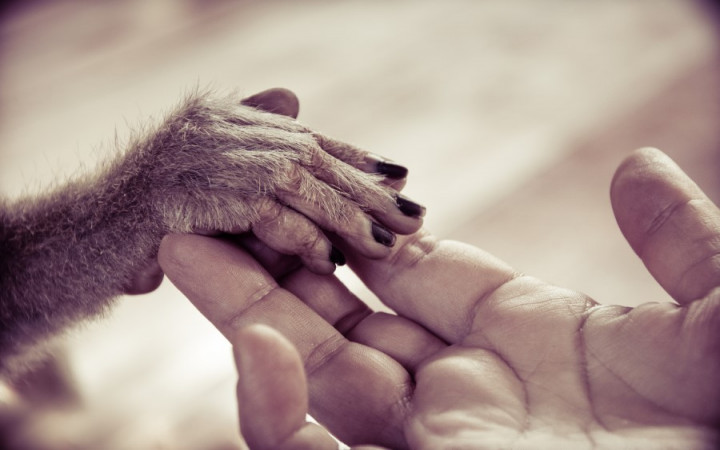Did you realize that every dog has the same name? No, we're not talking about Fido, Spot, Scooby, or Lassie. We're not even talking about "dog" as a name. Instead, we're referring to the scientific name of all dogs: Canis lupus familiaris.
That's quite a mouthful of Latin, so it's easy to see why we use "dog" or something more specific like "poodle." Scientific names identify creatures by their specific genus and species as a way to classify them. Within a particular type of animal, there can be various different species all with different names.
Take badgers, for example. Depending upon where you are when you come across a badger, you could find yourself looking at a Mellivora capensis (honey badger), Taxidea taxus (American badger), or a Meles anakuma (Japanese badger). They're all badgers, but they're all different species of badgers.
Of course, if you run into a badger in the wild, you'll probably wish you had another Homo sapiens with you. What's that you ask? It's another human being, just like you. As humans, our scientific name is Homo sapiens.
Does that seem kind of silly to have a scientific name for human beings? After all, there's just one type of human, right? It's not like we're going to confuse a human being with any other animal. Scientists would tell you, however, that a human being needs a scientific name just like all the other animals.
Scientists would also tell you that we're not alone when it comes to species within the homo genus. Just as lions and tigers both belong to the cat family and the genus panthera, humans belong to a family called hominid, which includes our early human ancestors from millions of years ago. Sure, Homo sapiens may be the only hominid species around today, but that wasn't always the case long ago.
Of course, we don't have videos or writings from the beings that lived millions or even hundreds of thousands of years ago. What scientists do have are fragments of what they left behind in the form of fossilized bones. Using ancient fossils, scientists have worked hard to piece together a picture of what early human history might have looked like.
For example, scientists think the first members of the genus Homo, an ancestral species thought to be closely-related to modern humans known as Homo habilis, originated in Africa approximately 2.8 million years ago. Other ancient hominid species have also been identified, including Homo neanderthalensis, Homo erectus, and Homo ergaster.
For many years, scientists believed that one species of hominid replaced another as evolution took place. New fossil evidence, however, now appears to support the idea that Earth may have been home to more than one hominid species at a time.
For example, scientists believe that up to four Homo species may have coexisted on Earth as recently as 40,000 years ago. Can you imagine Homo sapiens, Homo neanderthalensis, and possibly two other unidentified Homo species all living on Earth at the same time?
As for us modern humans, scientists believe Homo sapiens began to develop in East Africa around 200,000 years ago. Although the first Homo sapiens likely looked like us, they probably didn't develop modern behaviors until about 50,000 years ago. Since all other species of the genus Homo are long extinct, Homo sapiens is left to carry on into the future!





